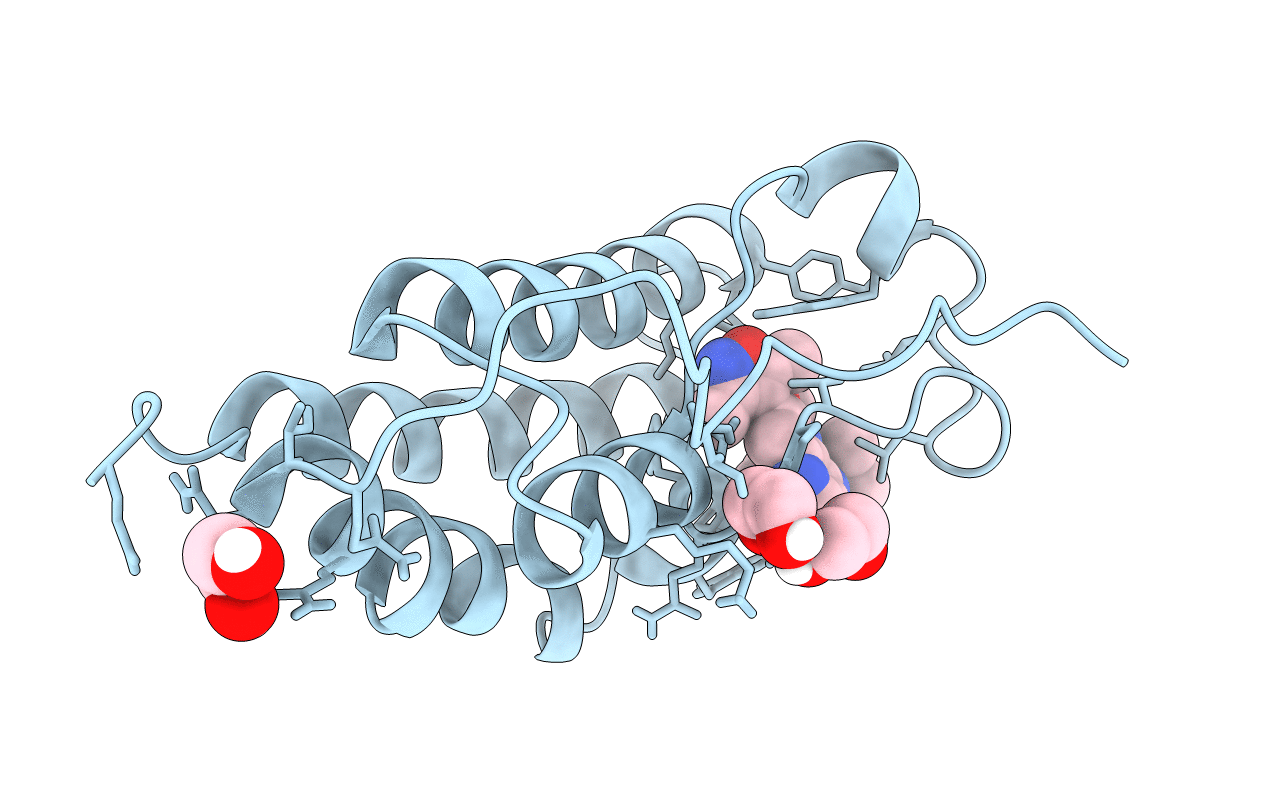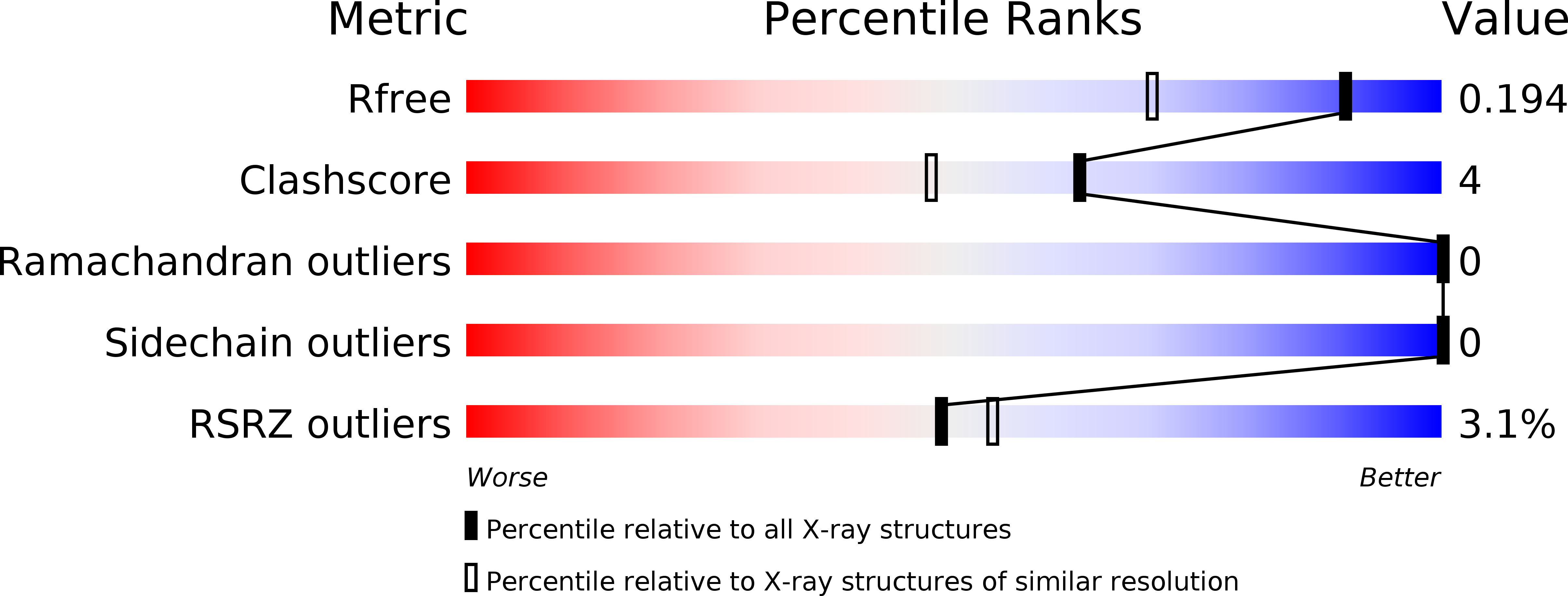
Deposition Date
2018-06-05
Release Date
2018-12-19
Last Version Date
2024-05-01
Entry Detail
PDB ID:
6DML
Keywords:
Title:
A multiconformer ligand model of 3,5 dimethylisoxaxole bound to the bromodomain of human BRD4
Biological Source:
Source Organism:
Homo sapiens (Taxon ID: 9606)
Host Organism:
Method Details:
Experimental Method:
Resolution:
1.50 Å
R-Value Free:
0.19
R-Value Work:
0.14
R-Value Observed:
0.14
Space Group:
P 21 21 21


